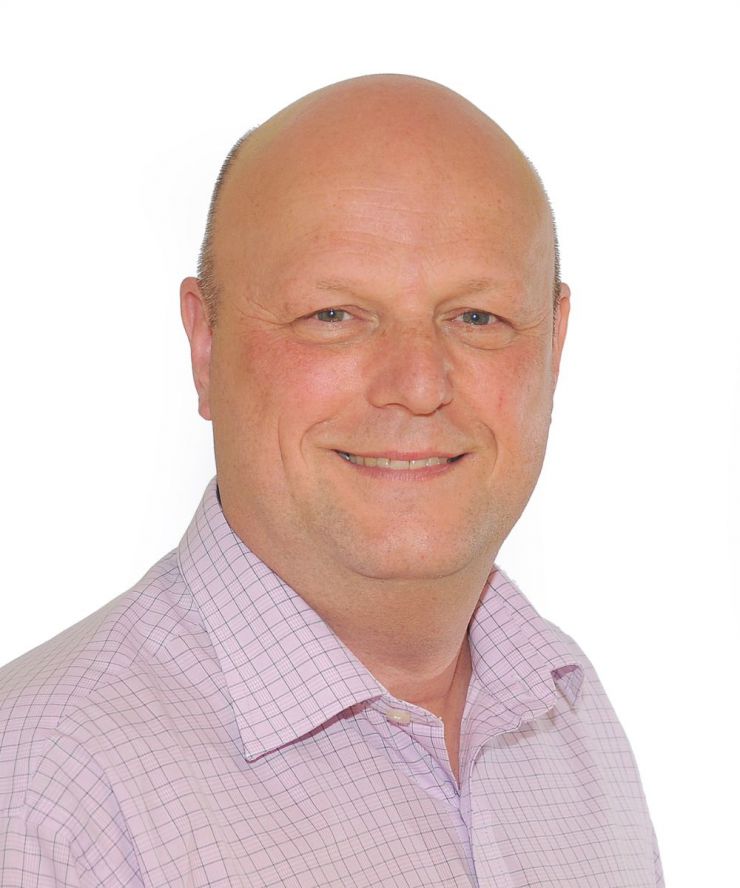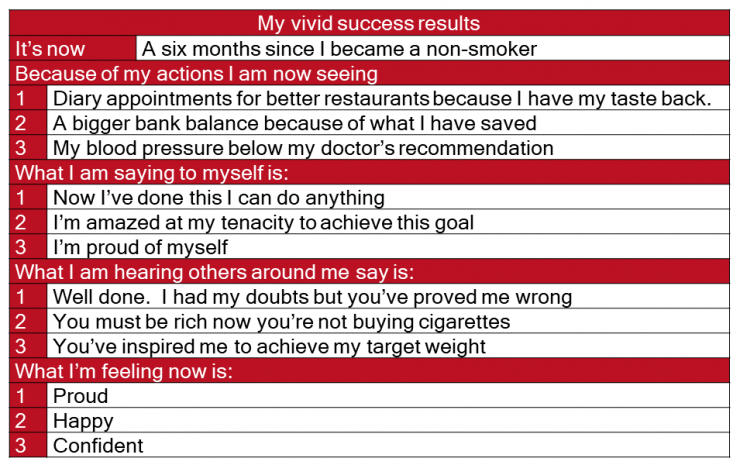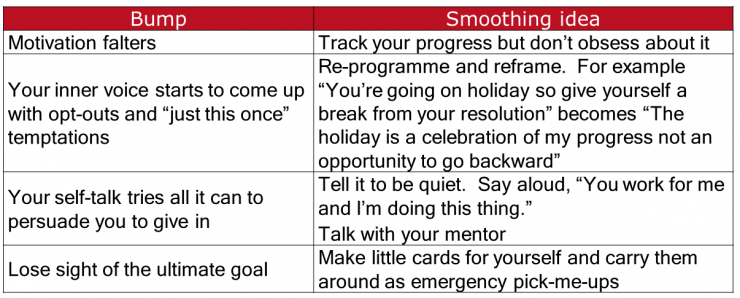Four steps to achieve your New Year resolutions


Derek Robertson , CEO
(Chartered FCIPD, MCMI, MInstLM, NLP Practitioner and Coach)
Author of The Great Cape Escapade (A Fable about effective meetings)
15 min read
Introduction
You want to achieve your New Year resolutions, right? You wouldn’t make them otherwise, would you? Many of us can’t resist the power of a New Year. It’s a time for renewal, an opportunity to reset the clock or achieve that life change that’s been gnawing away at you.
You’re up against it. The stats aren’t good. According to LifeHack only 12% of us will achieve our resolutions. And you’ll know from experience that many a good intention falls away before the January calendar gets into double digits.
So to everyone, I offer these four steps to supercharge your likelihood of success.
As adults, learners and achievers let’s make best use of our 1,000 trillion brain cell connections to guarantee our success. What I’ve to say will help you in your quest, whether it’s a healthy lifestyle, a new skill, hobby, work-life balance, whatever. It’ll help your team, it’ll help your family, it’ll help others you know and would like to help. It works for everyone. It draws on my lifetime in people development, knowing how adults learn and how they use their ‘little grey cells’ to achieve things.
As you read this you’ll see connections beyond New Year resolutions to getting value from training and development in your business too.
Your brain’s success wiring
Achieving a New Year resolution starts by getting your brain fully in step with what you want. Brain-friendly success if you will.
To paraphrase the raft of research from elite sports to neuro-linguistic programming (NLP), you can get your brain in gear when you:
- Visualise success using all your senses
- Give yourself something to achieve
- Break it down into chunks including short-term success check-ins
- Warm yourself up to the activity
- Make a public commitment and so put some ‘skin in the game’
- Keep up momentum for action
- Manage the self-talk from your inner voice
- Be ready for setbacks: you will lie to yourself and you will falter
- Know how you will celebrate your success.
With a successful training business helping ambitious clients get value from their training, I talk from a position of strength. I’m not perfect. I’ve my share of resolution failures. Rest assured though, I always know why and work every day to fix them.
Taking all the possible brain friendly content together I’ve boiled it down to four success steps for you:
- Set yourself up for success
- Break it down
- Keep up momentum
- Celebrate success.
The four steps to guaranteed success
#1 Set yourself up for success

Sorry folks. Rock giants Queen were wrong when they sang “I want it all and I want it now”. It doesn’t apply to New Year resolutions. You’re signing up to a marathon not a sprint. Might as well be honest with yourself from the get-go.
Setting your brain up for success requires three things:
- Know your why
- Be crystal clear on your what
- Mobilise your senses.
Know your why
Far too many of us dive into the ‘what’. “I want to be a size 10”, “Play ‘Spirit of Radio’ on the drums”, “Learn Spanish” and so on. Big deal.
Your brain needs a compelling ‘why’ to best help you. You’ll be giving your brain a massive head start (excuse the pun) when you truly, madly, deeply understand your ‘why’.
So, once you’ve an emerging ‘what’ challenge yourself over your ‘why’. It’ll result in either:
- A change to your emerging ‘what’
- The superficial ‘why’ you told yourself gives way to the ‘real’ reason
- A greater commitment to your why because you have more clarity.
Be crystal clear on your what
Focus on giving your brain’s energy and creative juices maximum opportunity to engage with your what.
- Make it specific, measurable, timed and so on.
- Make sure to frame it in the positive. “Give up smoking” constantly tells your brain you’re giving up something. Reframe for example as “Be a non-smoker”.
- Make sure that in glorious colour and smell-o-vision you have set out what you will see, touch, taste, and smell as your endgame.
Mobilise your senses
We all experience your existence through your senses. So, once you’re happy with your what, supercharge it. Create your own responses to the sensory questions in the following example. Notice that it encourages you to take yourself to the time when you’ve achieved your resolution by talking in the present tense. Your brain loves that.
Obviously for your own resolution you will have different answers. Ones that are true for you and therefore your brain will motivate you to achieve them.

Mental movies
Related to the questions above, take a leaf out of the high achievers’ playbook. Make a mental movie. Close your eyes and see yourself achieving your resolution. Feel what it’s like. Hear the soundtrack and experience the sweet smell of success as you direct yourself through your epic. Visualise the steps along the way as you star in the movie of your success. Be vivid as you notice the obstacles put before you and how you overcome each one, building your confidence as you go.
You get the picture? It works.
#2 Break it down

Remember the comedy ‘Blackadder’? Baldrick, Blackadder’s servant, would oft exclaim “I have a cunning plan”. He’s right. Your brain loves a cunning plan and the more chunked up it is the better. Lots of mini milestones helps your brain focus on what’s next and avoids overwhelming it with a big distant goal. Just as football managers take one game at a time, you create a plan with one task at a time. You have four areas to break it down.
- The practical plan
- Your support system
- The contingency plan
- Your commitment.
The practical plan
Of course you’ll know it should be specific: what, by when, how much, how will I know I’ve succeeded and so on. The brain friendly elements are:
- Mini success celebrations for achievements
- Have another reality check. You should have covered this in your SMART objective but check again nonetheless. Your brain will actively work against you if you’ve an unreasonable plan
- Makes sure you have vivid descriptions to help your brain engage. “Communicate with my nephew more” isn’t as good as “Call James every Friday at 5pm”
- Include reminders and stock takes in the plan
- Have it handy: print it, post it, keep a version with you at all times
- Flex it. If you have a setback; re-plan
- Make sure you’ve created a plan that you can enjoy.
Your support plan
You are not alone. Your brain will take advantage of the support systems you put in place.
People

Jiminie Cricket
Your conscience. Someone who will keep you on track

The mentor
Someone who has the T shirt and really knows the journey you’re on

The consiglieri
Someone who will give you sound advice
You may want more people. Or the three types I’ve mentioned could be one person.
Things
- Your diary like MS Outlook
- Apps like step counters and so on
- Have your own motivators. Have pictures of your goal stuck to the fridge, sign up to daily motivational quotes, buy a book of affirmations
This list can go on and on. You decide. A friend of mine wanted to learn French. He stuck Post-it notes with the French word around the house.

The contingency plan
“Forewarned is forearmed” as my Auntie Betty used to say, so give your brain a heads up by having a contingency plan in place. Your inner voice (Lex McKee calls it, The Fanatic in your Attic) will try to derail you. Your brain wants an easy life, to conserve energy, to get its fix. It will fight back. You must prepare for:
- Lying to yourself: “Grandad was 94 and he smoked all his life.”
- Creating excuses: “It’s ok on a Saturday when I’m out with the girls.”
- Softening your language: “I’ll try to stop this year.” Previously it was “I’m going to stop on 1 January.”
- Giving yourself opt outs: “I’ll give it a go again after this busy spell.”
All you need to start your contingency plan is to ask yourself “What if . . .” Next; you create your action to address each challenge.
Your commitment
To be crystal clear, your brain will up its commitment when you make your commitment public. So:
- Tell people
- Print off your plans
- Publish them on social media.
#3 Keep up momentum

“Do or do not there is no try”. Master Yoda’s mantra is my text alert tone. That way I’m reminded many times a day to act. To achieve your resolutions you must act. Don’t try. Do. Doing stuff will keep up your momentum.
There is more to this than just your action plan. You will hit bumps in the road so here are some suggestions for you to build on.
Smoothing external bumps

Smoothing out internal bumps

The little cards idea is interesting. When I stopped smoking in 2011, I made business cards each with a key messages on it. Examples were, “You’ll save money”, “You’ll live longer” and “You won’t stink!”. I actually put them inside a cigarette packet and looked at them when temptation struck.
The point is: do what you need to do to keep up momentum.
#4 Celebrate success

Notice, I’m not using the word reward because that’s too narrow. It does a disservice to your brains power (if you doubt that watch Scarlett Johansson in ‘Lucy’).
Along the way
This is also part of keeping up momentum. Include in your plan how you are going to acknowledge and celebrate successes along the way. Your brain loves something to look forward to, especially when it perceives sacrifice beforehand.
What you do has to be things that float your boat. However, I’d offer two that every brain will like:
- Take two-minutes of quiet time to bask in your success
- Re-programme your poor self-talk. “You said I was bound to crack yet I didn’t. I am and achiever. I can do anything I set my mind to.”
At the end
Once you achieve your resolution, it’s time for the big blow out. Whatever that is for you. It could be but not necessarily spending money. Let’s say you saved £600 because you reduced your on line betting. Spending £500 on a quality casual jacket could be a tangible reminder of your success. Every time to wear it, or even look at it in the cupboard, you get a positive hit because of the association with your success. Your brain loves these.
Add your improvement to your DNA
Your key takeaways are to approach your New Year resolutions in brain-friendly ways. Ways that increase the likelihood of your success. I’ve broken them down into four areas:
- Set yourself up for success
- Break it down
- Keep up momentum
- Celebrate success.
Now that you’ve achieved you can make the process part of your DNA.
- What have you learned about yourself?
- What have you learned about what works and what doesn’t for you?
Use the experience and your brain-friendly ways for anything you want to achieve: big, small, New Year or any time.
Postscript
At the start I said I did this blog underpinned by a lifetime in people development. No surprise therefore that this approach to individual success is very close to our approach to client value from their training.
Getting meaningful results from all your business skills, leadership programmes and team development follows a very similar approach.
- Have people get vivid about what success is for them
- A plan with clear milestones
- Brain-friendly training for adults
- Stuff to keep up momentum
- Celebrating successes along the way and at the end.
Pay it forward
I’m certain you’ll know people who want to achieve a New Year resolution. Be a friend and forward this blog on to them. It could be your first act of kindness of the year.

